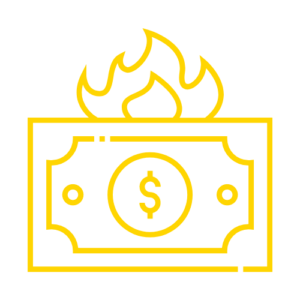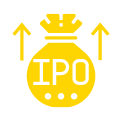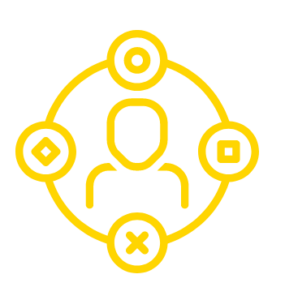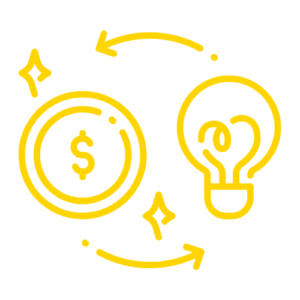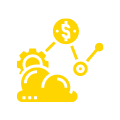We realized that entering the startup world can be intimidating for many reasons, and understanding some of the relevant terms can make it a tiny bit easier!
That is why we are here to explain the most common words used by the startup community for everyone to get an idea of what the heck are they talking about!?!
Keeping it simple as always, lets get to it. Are you angel and invested a huge amount of money in a startup? Well using an exit strategy you can reclaim your investments. It is kind of like playing poker and knowing the right time to quit the game. Exit is a gamble where you drop your cash out after collecting the spoils and walk away.
True to the title, an angel investor is a godsend for startups and entrepreneurs alike. An angel investor typically is a wealthy person who offers you money in exchange for a slice of an ownership in your company. Meet some real life angels here.
These are business models that define who are you selling your product or service to.
B = Business
C = Consumer
G = Government
2 = to (You already knew that)
- B2B = the big guy sells to another big guy.
- B2C = big guy sells to the small guy.
- B2G = big guy sells to the big brother.
- B2B2C = the big guy sells to another big guy (the middle man), who then sells it to the small guy.
The molten core of lean startup is BML, build-measure-learn-cycle. It is a loop of ideas and opportunities that form a model to take businesses to the next level. Let us give you a step by step instruction on applying BML to your business, life, anywhere feasible.
Step 1: have some plan, shooting in the dark gets you nowhere.
Step 2: Get your prototype ready, or MVP as we startup nerds like to call it.
Step 3: Measure your results, is this what you wanted for your end result? this step will define the next step.
Step 4: If you are not satisfied with your end results, get back to the drawing board and PIVOT. If satisfied, congratulations! Time to hit the market.
Bootstrappers strap your boots. Just kidding. They are startups who don’t depend on investors. They rely on combining their own savings along with talented awesome people and pure luck to fund the starting stages of their startup. Check out this awesome example of Bootstrapping!
Burn rate is the rate at which a company is losing money, in other words, how much money you can spend before the cash flow is negative. A company’s burn rate is usually the total amount of money they spend in a month. So if you manage to spend one million a month, it means your burn rate is one million. It also means you are a big spender.
Basically a business model is how you plan on making money with your product. It is not all about the money but it is about generating value. What value do you offer your consumer? Why would they pick your service over that of the competition? Your business model is your framework to creating a successful business that can achieve long-term goals. For a business model you may require something called value proposition. Remember that? If you don’t remember there is a chance you need to read the dictionary thoroughly…..
Buyout is simple. For example, you have a beautiful cottage by the lake but the up-keep is hard, or recent events have made your cottage super popular among real estate buyers. An interested party with a LOT of money, offers you a huge sum for your cottage. You sell…and ta-da! that is a buyout. A larger company, private equity and new investment rounds are a few reasons startups decide to buy out.
Everyone’s had an epiphany with friends over “a few” drinks to start their own company. The next morning after popping that painkiller to numb the hangover from last night, you still find that idea interesting. You decide to start working on this vision and of course you need helping hands. The person who helps you along the journey from idea to viable company, is your co-founder. Your co-founder is there with you from the get-go or hops in to the wagon in the begining to fill the skills you lack and complete the picture.
If you have a product or a service that you are super excited to develop, but for some reason the big investors don’t see the value, you might want to try crowdfunding. If you plan your crowdfunding campaign to be as cool and sexy as possible, you might get the attention of a large number of early adopters willing to put a small amount of their money to help you launch your stuff.
Disruption, something we have heard when we make a little too much noise. Keep quiet kids! In startups, especially our friends in the tech startup; disruption is a mindset adopted to begin simple and progress within your market, and eventually replacing the existing competition. A great example are companies like Netflix and invention of an engine vehicle that replaced horse driven carriages. Certain products today are referred by the brand name because they have established themselves so well that they become a primary selection. Make some noise!
We all know a person who got a new gadget that no one else has yet, and can’t keep their mouth shut about how cool it is and how everyone should have one. Those are early adopters. The people who use a new product, innovation, or technology before others. Startups benefit from early adopters because they are ambassadors of the new product, and can also give valuable feedback on the possible flaws.
Growth hacking is a mentality of failing fast to succeed, experimenting, creativity and trying s**t out. If you want to know why to hack growth, here’s a brand new article about the subject by Red Brick Accelerator!
Initial public offering. Think of it as a yard sale, except everyone who buys a piece of something you own, now shares in a piece of it. Initial public offering refers to the first time a company allows the public to invest through stock. If the entry to the market is successfull it allows the business to grow bigger with the newly aquired capital. Additionally, it allows for initial investors to plan an exit strategy and cash out!
Try, try, try again.If at first you don’t succeed, Try, try, try again (William Edward Hickson).We have all heard of that proverb! We are not here to talk about William, he is cool tho. Iteration is making small changes to your product/service based on how your customers are accepting your product. Remember not many of these changes make it, the idea is to try different things and repeat while aiming to do better. In short iteration is trying fast and failing fast and moving on! It is also the core process of Growth Hacking.
The lean startup favors iteration over rigid planning. The terms we have discussed MVP, iteration, pivoting are a few fine words that have existed before the official rising of lean startup and form the principles of lean startup. Think of it as +planning a trip; instead of planning every single second of every single day of the trip, you ask your mates what they prefer and how they feel on different days of the trip and plan accordingly. Life happens, a plan never goes exactly as you planned it in your head.
As an individual your liabilities would be your student loans, weekly groceries, monthly bills and payments you need to make in order to thrive. In businesses liabilities are debts you own to employees, other businesses, bank loans, taxes and operational expenses. (Liabilities = Assets – Equity)
The real MVP…..most valuable player..Wait…thats not it. Minimum viable product is your first ever (continuing to keep it simple). Did you just create and app to feed your dog from work? COOL! but you need to have a prototype first to understand your customer’s needs. Sure, everyone is behind a cool new app but how does it work in practice? Instead of conducting surveys and asking people if they would like such an app, why not create a simple version of it and see how it is received.
NDA protects sensitive information that is not meant for anyone else’s ears except people involved. If you sign an NDA when you start in a new job, you can’t tell anyone about the secrects at your workplace. Secret things protected with NDA can be their business model, recipe of a product, new innovations or other similar things.
Do you love Shark Tank? Well, so do we. Enterprenerus shoot their shots at the judges and share their business idea and concept, in hopes of getting attention and investors. They basically ‘pitch’ their idea. Your main goal while pitching is to get new customers, investors and just letting people know you exist and have a cool idea that can make everyone money. Then there is also pitching in cricket but that is not our area, Sauna Pitching is.
When you read ‘Pivot’, does your mind go to Ross screaming ‘PIVOT’? Us too! To Pivot is to change the product or service to respond to the problem better. Think of it as finding a better place for your couch where it aligns better with the television. According to Red Brick Accelerator, on an average 30-40% of startups pivot during their incubation period.
Problem solution fit is the foundation for product market fit. Remember Value proposition? We wonder if the customer would buy or subscribe to the product or service. So time to do some exploring by series of testing and validation if your solution is actually solving the customer’s problems. If it doesn’t, then back to the drawing board you go!! Ask any of our community startups at Platform6, no company or product has stayed the same since creation.
Product market fit is the specialisation process after problem solution fit. This part is all about developing your awesome product / service, talking to your target group and finding out who exactly are your customers. In addition this is something startup accelerators work with often, and guide the startups to find the right product market fit.
Remember MVP? If you do, then this term will be easy to understand. PoC , Proof of concept, is the starting stage of your product/service. Is it a practical idea that will work in the real world? Your proof of concept is your backing for why your product deserves a shot and why there is a need for it. You start with an idea, you iterate a few times and then land on your proof of concept, in order to gather support for your product. PoC is your first step into reality; where you idea is given life.
Your business is considered scalable if it is managing to grow rapidly at the face of increasing demands. Thanks to the advancements in technology you can now satisfy the needs of multiple customers even if you do not have multiple providers. Are you adapting easily to the changing environment and keeping up with what the world demands of you? Congratulations you are scalable!
This is the first official funding round. True to its word, it is literally the money invested here that helps grow your business; you are planting the seed. There is this one dude who loves this stage of funding; Angel Investor. Remember? Once you have this round of funding, you can hire employees and begin to develop your product or service further!
Let’s have a quickie with these rounds of funding:
Series A funding is where investors give you money to fund your product and user base and help the business create a strong strategy that can soon start generating revenue.
Series B funding is all about growth. You can invest further in marketing, branding and work on scaling you business. Your business model is looking good and now go and grow.
Series C funding. If you have made it here, it means you are a successful business and are planning to take over the world with your product, expand into new markets and maybe even expand your product line.
As you might expect, a shareholder agreement is an agreement between parties who have invested to the company and own a share of it. Usually it is made to protect the investment and set out fair rules between investor dudes and govern of the company so that nobody gets bamboozled.
Like in nature’s ecosystem, the principle is the same. People, startups, communities and other operators interact together, supporting and helping each other to grow. Tampere’s startup ecosytem is born from people, passionate startups, organisation and a bustling city that has birthed 285 active startups.
Remember playgrounds when you were younger? You play with random kids, share your toys, the works! Now a takeover is someone buying your toy in the sandpit. Your sand truck, if you may. Now, let us use this to discuss the different types of takeovers in business.
Friendly Takeover: You and your playground buddy negotiate terms, and they get your truck on terms you happily agreed. Good for you both.
Hostile Takeover: Big lousy bully of the playground, you disagree with the terms bully has suggested. Regardless, your truck is acquired, and you need to go rat on him asap.
Reverse Takeover: Remember IPO; you will need it here. Usually, companies need to go through an IPO to be listed as a publicly owned company, a tedious process. When a private company takes over a public company, it becomes a public company. Kinda like if your teacher at pre-school takes your truck and it becomes a school property; now everyone can play.
Backflip Takeover: Who can do a backflip? Come to Tribe and lets try? A backflip takeover is acquiring a company because of its strong brand presence. After the merger, the brand name is preserved. The person performing the takeover becomes the subsidiary of the target acquired. Imagine buying your older siblings truck but telling everyone it is his truck so they dont take it from you, also your older sibling is cool at school.
What is traction? Technically the grip of your tires while driving down an icy road. Aren’t living in Finland, but somewhere warm? Lucky you! Well, traction in startups is about having validation from your customers to show investors that you aren’t going down a slippery slope but have enough traction to move forward. You build momentum with traction in your business and have a chance at creating a successful business model. Higher the traction, happier are people to invest.
Mystical. Magical. Single horned creatures. Quite the fantastical beasts. These beasts take a much more tangible form in startups. How do you ask? Unicorn startups are a rarity because they are privately held startups valued at over 1 Billion. SpaceX is an example of an unicorn. A unicorn that makes our fantasies of commercial space travel a reality! SpaceX is currently valued at USD 74 Billion!
Does your product or service have a feature that makes it better from all the competitors? For example a material that makes it last longer than other similar products? If your customers are willing to buy your product instead of competitors (and pay even a bit more), you have a USP!
How to make your product or service stand out from all other alternatives, and become the best possible option for the customers! By coming up with a unique value proposition that no one else has! UVP points out the unique personality, identity and strenghs of your business.
It is basically proving that your s**t works. It is not enough to create a product that works and believe in it. It is very important to create the approval of the product on the market. You could grow the most delicious apples and know to be good but it should also sell in the market. Find out how is the competition like? Are your apples the best? Why would anyone buy your apples? This is the step you take before you proceed with the idea or PIVOT! (We are sure throwing that word a lot out here!! LOL) Truth is most startups pivot. Iteration is necessary in this business….oh sorry thats another word. Maybe you want to check that out too.
Valley of death is a period during your startup life cycle. It is the time between friends, family and fools and till the point you are successful (your product is selling for money). The period is an exciting one but it also means uncertainty. It is like that period after you graduate university and hope to make it in your field of study. You have the knowledge and hopefully the passion and now you hope your products catches attention and starts generating revenue.
Value capture is a model in which a business is able to create profit from its transactions. Think of it as growing an apple tree yielding delicious apples, you have your value there but you need to sell those apples to capture value. One easy way to test your ability to capture value is to see if you can raise prices without losing customers?
Value proposition is to indicate why a customer would buy or subscribe to your product/service. The product or service you create should aim to solve your consumer’s troubles or offer new solutions that the competition doesn’t. If you cannot do those things, maybe time to evaluate your product/service and PIVOT??????!
Venture capital is a BIG load of money that boosts your company in exhange for equity. Sort of like when Ariel gives up her voice for legs. JUST KIDDING. This will only happen when the investor can see long term growth potential. If your company has caught the attention of a venture capitalist, you might be doing well.
It’s 2021, anything can be tailored to be sold as a service. Think about it for a minute and compare all the service apps on your phone at the moment. Many of your applications are SaaS, software as a service. Multitasking while you are reading this post and watching Netflix? Netflix is a PaaS, platform as a service. Basically, XaaS stands for everything you can sell as a service. Be warned: keep it legal. Everything has limitations 😉 XaaS works best with the correct technology and logistics.
This Startup Dictionary for Dummies has been put together in by Tribe Tampere marketing team volunteers and interns with the Marketing Lead Mirella Mellonmaa and with the help of Mirza Sagdati (aka Startup Thief) during the spring 2021.
Special thanks to: Catherine Maloney, Ella-Juulia Ora, Farzaneh Esmaeili and Leila Ali







